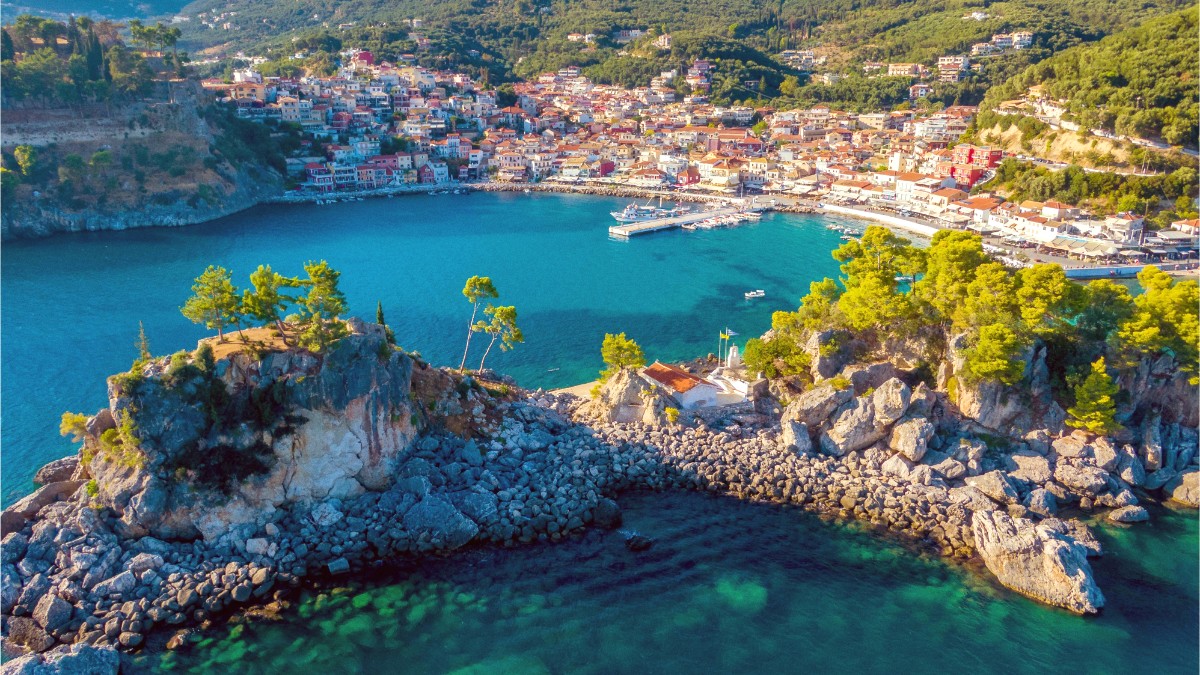
Greece
This guide frames a journey to Parga, ensuring its charm, history, and natural wonders are uncovered. Discover the secrets of its cobbled streets, relax on its inviting beaches, and enjoy its flavorful cuisine. Parga offers a blend of serene relaxation and engaging exploration, promising memories that last a lifetime. Get ready to experience a corner of Greece that combines island allure with mainland accessibility.
Parga's long history highlights its strategic coastal position, a desirable location for many powers over centuries. Early settlements point to its existence from antiquity, with its most influential period beginning in the Middle Ages.
The town gained prominence under Venetian Republic control from 1401 to 1797. The formidable Venetian Castle of Parga was built and reinforced during this time, a symbol of the town's resistance and a strong defensive outpost. The castle facilitated trade across the Ionian Sea, serving as a haven for Greeks seeking refuge from Ottoman rule. Venetian influence appears in the colorful houses and narrow streets of the Old Town. After Venetian rule, Parga saw instability, briefly under French and then British control. A poignant event occurred in 1819 when the British sold the town to Ali Pasha, leading to a mass exodus of inhabitants to Corfu, a story of sacrifice and determination. Parga rejoined Greece in 1913 after the Balkan Wars, concluding centuries of foreign rule. Today, its history is present at every turn, functioning as a living museum.
The town center has bustling activity, especially along the waterfront promenade, with cafes, tavernas, and shops. The narrow, winding streets of the Old Town, leading to the castle, form a maze of traditional houses, artisan shops, and hidden restaurants. This area offers leisurely strolls, souvenir hunting, and enjoyment of local flavors. The port is a center for local life and a departure point for popular boat excursions.
Beyond the town's immediate charm, Parga has a variety of natural attractions. Its beautiful beaches, like Valtos, Lichnos, and Sarakiniko, offer clear waters for swimming, snorkeling, and water sports. Each beach has an unique character, from lively Valtos to serene Sarakiniko. The surrounding landscape, with its olive groves and hills, provides a setting for walks, scooter rides, and exploring inland villages.
Enjoy safe beaches and a relaxed pace.
Find a romantic setting for quiet dinners and scenic walks.
Discover opportunities for water sports, hiking, and exploring the Acheron River.
Find plenty to explore within the town and its vicinity.
Works as a standalone destination or a base for wider Epirus and Ionian Islands exploration.
The town's hospitality sector includes a spectrum of accommodation options, from simple guesthouses to luxury resorts. Dining options range from traditional Greek tavernas serving fresh seafood to international eateries. The local cuisine, rich in fresh ingredients and Mediterranean flavors, is a draw for many visitors. Parga presents a welcoming, beautiful, and engaging setting for a Greek holiday, combining mainland charm with island vibes.
Parga balances its growing popularity with its authentic local character. Despite attracting many tourists, especially during summer, it retains a genuine Greek feel. The local community is welcoming, and opportunities exist to experience traditional life away from the busiest areas.
Its manageable size means many attractions and amenities are within walking distance, contributing to a relaxed atmosphere.
Parga maintains a balance between its growing popularity and its authentic local character. Despite attracting many tourists, especially during the summer months, it manages to retain a genuine Greek feel. The local community remains welcoming, and opportunities exist to experience traditional life away from the busiest areas. Its manageable size means that many attractions and amenities are within walking distance, adding to the relaxed atmosphere.
Parga's hilly terrain means comfortable shoes are a good choice for walking its charming, yet sometimes steep, streets.
Consider a boat trip from Parga's port to experience the coastline from a different perspective and access secluded coves.
To save money, consider buying fresh produce and snacks from local markets and preparing some of your own meals.
For a balanced trip with good weather and fewer crowds, consider visiting Parga in May, June, or September.
Always check the latest official government travel advice for Greece before your trip. Requirements can change.